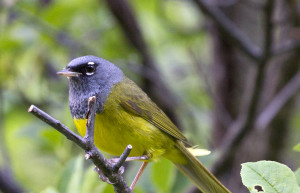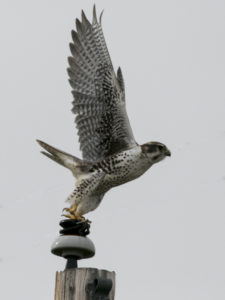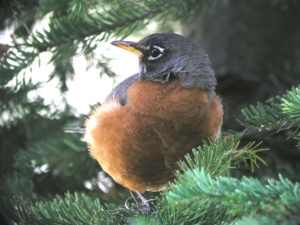Protections for Migratory Birds Vanish
 The Migratory Bird Treaty Act turns 100 this year. That seems like cause for celebration. This Act has been the cornerstone of bird conservation, essentially prohibiting the killing of migratory birds without a permit. The act protects over 1,000 bird species, from rare birds also protected under the Endangered Species Act (e.g., Whooping Cranes), to common and abundant species such as ducks, swans, robins, owls, and bluebirds. To enforce the Act, misdemeanor and felony criminal penalties can be collected for the unauthorized killing of birds protected under the Act.
The Migratory Bird Treaty Act turns 100 this year. That seems like cause for celebration. This Act has been the cornerstone of bird conservation, essentially prohibiting the killing of migratory birds without a permit. The act protects over 1,000 bird species, from rare birds also protected under the Endangered Species Act (e.g., Whooping Cranes), to common and abundant species such as ducks, swans, robins, owls, and bluebirds. To enforce the Act, misdemeanor and felony criminal penalties can be collected for the unauthorized killing of birds protected under the Act.
Alarmingly, the Act is facing an unprecedented attack. On December 22, 2017, the Trump Administration issued a new solicitor’s legal opinion which reverses the ‘incidental take’ provision of the Act. This new legal opinion is contrary to the long-standing interpretation of the Act by every Presidential Administration (Republican and Democrat) since at least the 1970s.

The new interpretation only protects birds that have been directly, intentionally killed by humans. That means, if a person intentionally kills a bird (e.g., directly shoots them), then they could be charged under the Act.
The long-standing interpretation of the law (effective before December 22, 2017) protected birds by prohibiting “incidental take” without being too onerous for industries. ‘Incidental take’ means that industries would no longer be held responsible for unintentional bird deaths resulting from their activities (think wind farms, etc.). Examples of incidental take of birds in Montana and the surrounding states:
- Berkeley Pit: No protection for birds that land (and die) in the Berkeley Pit. The latest significant incident was when about 3,000 Snow Geese (and Ross’s Geese) died there in November 2016.
- Pipeline Spills: there have been 2 pipeline spills with birds oiled on the Yellowstone River within the last 10 years (July 1, 2011 Silvertip Pipeline Spill, ExxonMobil pipeline, 1,500 barrels of oil, company paid $12 million in damages; January 17, 2015: Bridger Pipeline Company spilled crude oil into the Yellowstone River near Glendive, 42,000 gallons of oil spilled).

- Oil Wastewater Pits: this is the main law that ensures oil companies will manage their wastewater pits to ensure that they don’t excessively kill birds during migration.
- Wind Farms: this is the main law that ensures wind farms will not be located in areas where they might significantly kill birds (migration corridors or where Species of Concern nest).
- Utility Line Electrocutions: this is the main law that ensures utility companies work to prevent bird (especially raptor) electrocutions on power lines.
NOTE: The Bald and Golden Eagle Protection Act still protects those two birds from incidental take.
If you are interested in learning about this issue, here are some places to start:
- Popular article: High Country News, “Interior Cancels Decades-old Protections for Migratory Birds.”

- Popular article: Wyofile, “Zinke Draws Fire from Prominent Wyoming Public Servants.”
- Letter sent by 17 former wildlife officials to Zinke (January 10, 2018; all but one agency director since 1973 signed this letter, including top Interior officials from Nixon, Ford, both Bush Administrations, Clinton and Obama).
- Solicitor Opinion M-37041 (December 22, 2017; 41 pages; written by Daniel Jorjani, a Trump appointee).
Photos: Photos on this page (Great Blue Heron, Common Loon, MacGillivray’s Warbler, Burrowing Owl, Snow Geese, Prairie Falcon, and American Robin) were taken by Bob Martinka.